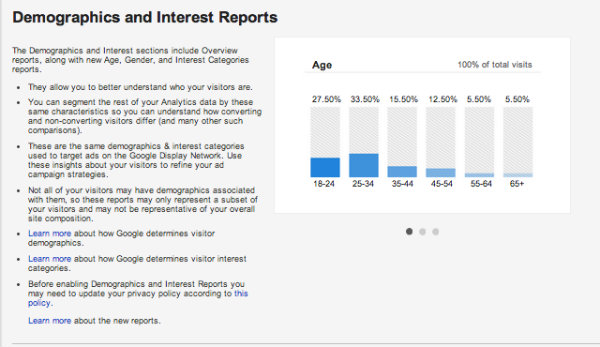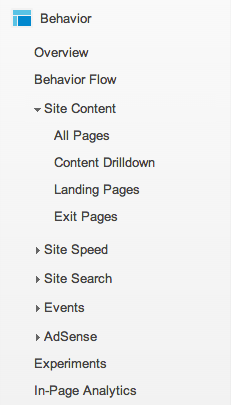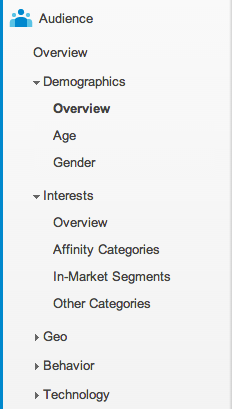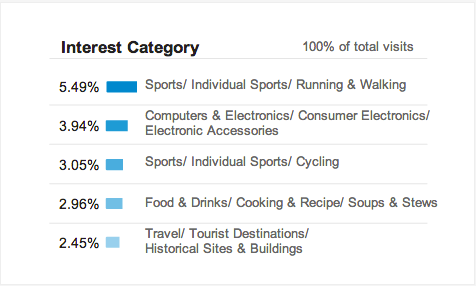- Blog Home
- Seo
- Jd Peterson
- A Guide To Google Analytics Behavioral Targeting
A Guide to Google Analytics Behavioral Targeting
The latest Google Analytics feature provides more insight into visitor demographics.
The new Google Analytics behavioral targeting feature has the potential to massively increase conversion rates for businesses that make use of the data provided. Google Analytics historically has shown webmasters various information about their visitors, including browser, source, time on site, location, and more, but most recently Google announced a new demographics and behavior report. In order to make the most of this exciting new feature though, you first need to understand what behavioral targeting is and what applications it can have.
See also: How to Make Sure Your Content is Quality for Google News
What Is Behavioral Targeting?
Behavioral targeting is a method of customizing the online experience to better suit individuals' needs, habits and personalities. It takes into account certain characteristics of web users, such as their browsing histories or the type of device they are using, and delivers tailored sites and services based on the information provided.
The best way to understand behavioral targeting is to consider some familiar examples. At a general targeting level, you'll notice that certain ads are relevant to you based on your interests or websites you visit most. At a more specific level, you may have noticed that ads tend to follow them around the Web -- for instance, viewing a certain product on the website of your favorite store will lead to you being shown ads for that product on other sites (known as retargeting). However, the scope of behavioral targeting can go far beyond simply delivering ads that users are more likely to be interested in.
How to Use Behavioral Targeting to Customize a Website Experience
The Google Analytics behavioral targeting feature allows webmasters to view information about how users interact with a site, including which pages they land on and how long they spend browsing before exiting the site or making a purchase. This data gives valuable hints about how the site could be improved to increase conversions or encourage repeat visits.
Click on the Behavior Flow tab in Google Analytics, and you will see a flowchart showing the top pages that users land on when they enter your site, and which pages they go to from there.
This information allows you to see the pages that have the highest drop-off rate (visitors leaving the site without browsing further) and which ones encourage visitors to navigate further into the site. Thanks to this information, online marketers can focus their attention on promoting the pages that are most likely to result in user engagement and conversion.
However, the real key to behavioral targeting is to understand the demographics of the site's audience and use this information to customize the experience that each visitor receives. Google Analytics offers a high level of information about visitors, including their age, gender, location and interests. Combined with data about how often visitors return to the site and how long they spend there, this information can allow webmasters to understand how their site appeals to particular groups of people. This understanding can then be used to improve the site; for example, by showing visitors to an e-commerce site the products that are most likely to interest them.
The latest addition to your analytics dashboard is under the audience reports. Most of you will notice a new segment called 'Interests.' With this information, you can see a report of your users age, interest categories, and if they're in-market. You'll need to enable this reporting feature by adding a new tracking code, but the benefits of delivering more relevant content to your visitors will lead to a better experience.
A key part of behavioral targeting is grouping people into profiles based on their browsing behaviors. Creating profiles that accurately reflect the needs and expectations of different groups of users can be tricky and is often a process of trial and error. However, once marketers begin to accurately categorize people and tailor their experiences of a site accordingly, they are likely to be rewarded with increased customer engagement and better conversion rates.
Photo: marfish75
How have you used behavioral targeting? Share your stories with us in the comments section below.
To Read More About Google Analytics, Click the Links Below:
Understanding Website Consumer Behavior
The Importance of Google Authorship
Why You Can't Stop Writing for Google



